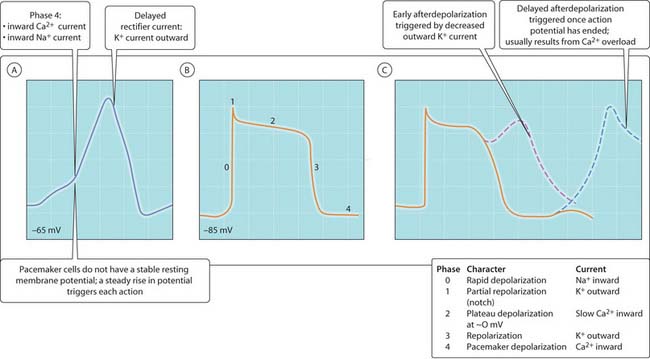10 Arrhythmias
Cardiac electrophysiology
The rhythmicity of the heart is controlled by the sinoatrial (SA) node, which constantly fires (70–80 discharges/min; faster than any other region in the heart). Action potentials generated in this node quickly travel throughout the atria and ventricles via the atrioventricular (AV) node, which connects the two areas electrically; action potentials spread down the right and left side of the bundle of His, which connects with Purkinje fibres conducting impulses throughout the ventricular muscle mass. Both parasympathetic (decrease) and sympathetic (increase) nervous systems influence action potential discharge from the SA node. Action potentials generated in the SA node and ventricular cells are characterized by the opening of different ion channels, and the shape and time course of the action potentials generated are dependent upon the types of ion channel involved (Fig. 3.10.1).
 delayed after-depolarization, inward current associated with raised intracellular Ca2+ triggers ectopic beats
delayed after-depolarization, inward current associated with raised intracellular Ca2+ triggers ectopic beatsStay updated, free articles. Join our Telegram channel

Full access? Get Clinical Tree






